WOLFSKO – SHADOW PLAY, VOLUME II, PUPA – EDITION DE POCHE
Posted in Art, Editions, Exhibitions, Zines on May 18th, 2024Tags: collage, drawing, French artist duo, Wolfsko
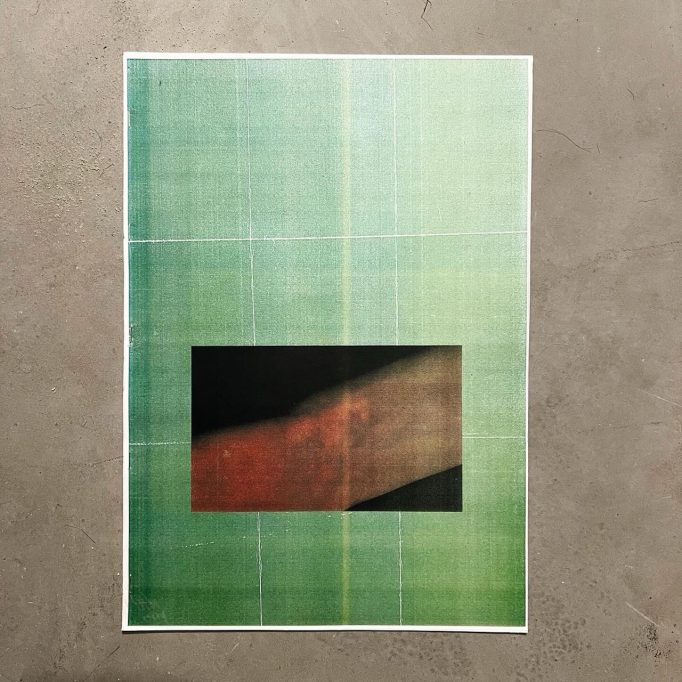

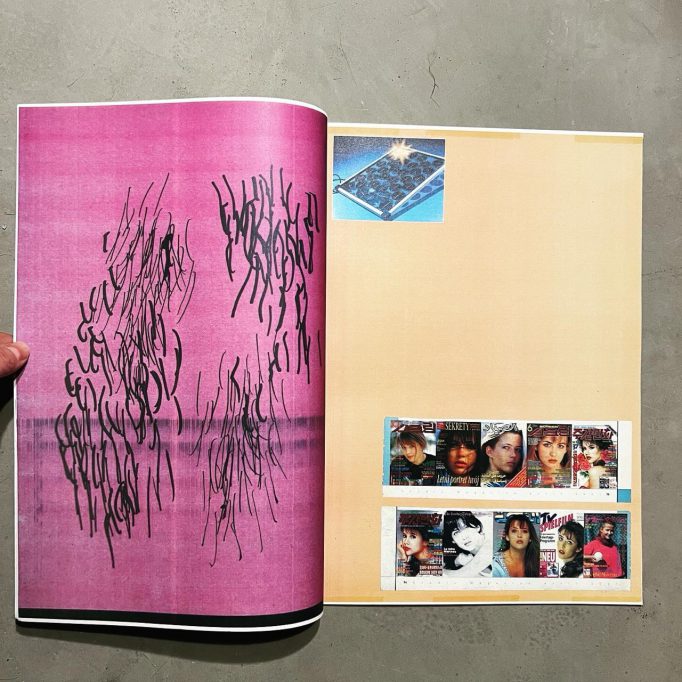





Un fanzine de Hendrik Hegray au format A3, incluant photographie, collage et illustration
2019
Author: Hendrik Hegray
Publisher: Hendrik Hegray
Order here
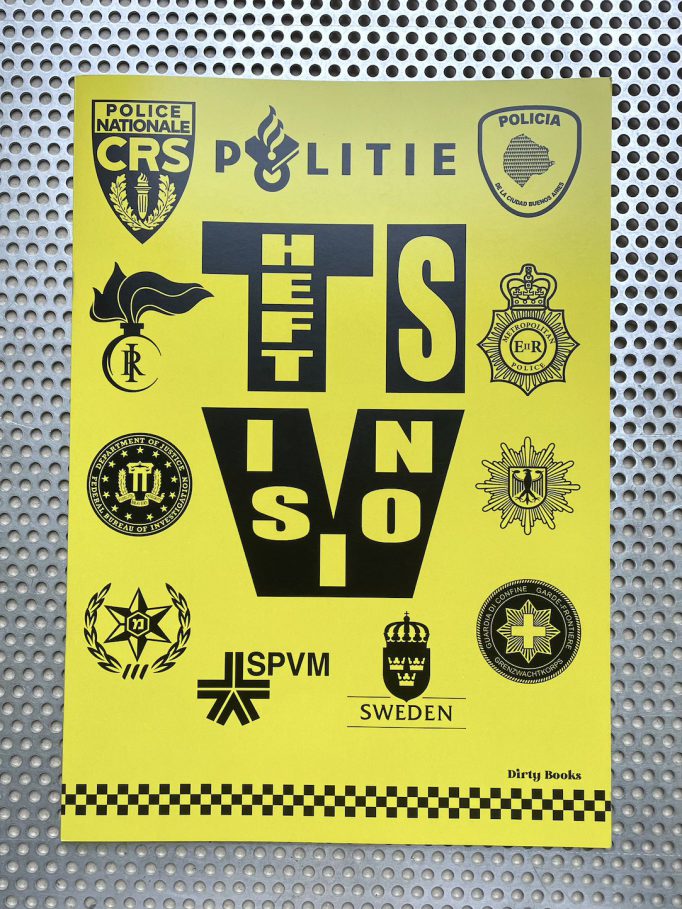







The works in this publication were commissioned by Fredi Fischli and Niels Olsen. I was asked to remake each of artist’s work as ‘posters’, with the direction that they should be at least 85% ‘Dan Mitchell’. The joke was to appropriate the appropriators. Additionally I included, as subjects, the architect of the show’s design, Petra Blaisse / Inside Outside, and also the curators themselves.
Things got a little confusing between 2020 and 2021 as there were 3 book projects on the go at the same time – the official catalogue for Theft is Vision, the book ‘Dan Mitchell Posters’* (both designed by Teo Schifferli and an unofficial lolz style book/ catalogue of the posters now published here. Only the book of my posters made it to print. Cultural fashion shifts and Covid put paid to the desire to produce a physical publication, appropriation, as a subject didn’t seem to be cool anymore.
Pocket Guide: Dan Mitchell Posters
With: Casima von Bonin. Maurizio Cattelan, Maria Eichhorn, Marie Louise Eman, Syvie Fleury, Isa Genzken, Richard Hamilton, Charline von Hey, Pierre Joseph, Valentina Liernur, Dan Mitchell, Mathieu Malouf, Malcolm Morley, Albert Oehlen, Betty Tompkins and Gili Tal.
Exhibition architecture by Petra Blaise / Inside Outside
The notion of ‘Theft’ establishes a site of investigation. This exhibition examines the desire to appropriate – a fundamental theme in the production of art. Throughout art there are typologies that ensue from the appropriation of motifs or of other works of art. As just one form of aggressive theft, the act of citation was already a cultural strategy long before Appropriation Art manifested itself.
At Luma Westbau the following questions are posed from a contemporary perspective:
What are the genres established through appropriation today? What does stealing mean for artistic production? Is it an act of removal and subtraction? Or can it be a productive strategy as suggested by the art history of Appropriation Art? In the context of this exhibition, ‘Theft is presented as dialogues and translations between artists. In essence, the exhibition confronts two opposing concepts in appropriation: the desire to appropriate as the idolization of sources or as an attack on and subversion of the established.
The typology of the enfilade a suite of rooms in grand architecture – is reconfigured in translucent plastic inthe exhibition design by Petra Baisse / inside Outside and inserted into the White Cube spacent encloses formative typologies of works of art productively used by numerous artists. The investigation leads to a wild variety of iconic and unexpected results: reconfigurations of Marcel Duchamp’s readymades, Kazimir Malevich’s Black Square, Lucio Fontana’s Concetto Spaziale, Jasper John’s Target, Fra Angelico’s Annunciation, Jacques-Louis David’s Napoleon Crossing the Alps, book illustrations by Bernard Buffet, and Courbet’s L’Origine Du Mode or variations on shopping-bag installations. By gathering these typologies together, the exhibition reveals and contrasts different appropriation strategies in art, and invites to discern and encounter sources, counterparts, and sundry partners in crime.
Order here

Dear friends,
Motto is pleased to invite you to the film screening and double book presentation of
Objects in Mirror
by Tasman Richardson
Published by Impulse [b], 2023
Tasman Richardson is his memory of screens. Video from cathode ray to capacitive pixels shapes his language, directs his understanding, and ultimately borders his imagination. Building on McLuhan’s statement “We become what we behold”, Richardson shuttles through the history of tele-vision and tele-presence, postulating consciousness itself as Gysin-esque “cut-up” collage. Fragmented, digressive, and occasionally manic, Objects In Mirror refracts autoethnography into a technicolour meditation on our mediated world. An intimate and humourous technical-mystical delving into a distrust of all things perceived both in life and art.
&
DIE SCUM: Sex & Drugs & Contemporary Art
by Jubal Brown
Published by Impulse [b], 2023
DIE SCUM, Sex & Drugs & Contemporary Art is the debut novel by artist and iconoclast Jubal Brown, a post-post-modern love story of the drug dealer to the art scene and his paranoid deluge through alcoholic-depression to redemption and personal agency. A 60,000 word auto-fiction confessional of addiction, to drugs and alcohol but, ultimately an examination of addiction to dysfunctional relationships, unhealthy ideals and behaviours, the performance of identity, and the failure of masculinity.
The reading will be followed by film screenings of Richardson and Brown’s video work.
Tasman Richardson & Jubal Brown have been producing video work, sometimes collaborating, for 25+ years, originating in the 1990s with a unique high energy style of experimental video: A/V, audio-visual, or visual music – also known as JAWA, the recombinant montage of appropriated television&movies treated as raw material, sampled and remixed to build compositions engaging the lexicon of contemporary media culture.
This short program will showcase a selection of video work from the past and present.

About the authors:
Tasman Richardson
Tasman Richardson began pioneering his audio/visual cut up method known as Jawa in 1996, later co-founding FAMEFAME media arts collective in 2002, co-creating international a/v tournament Videodrome with cohorts Jubal Brown, Elenore Chesnutt, and Josh Avery, and launching abstract, anonymous live showcase The New Flesh in 2011. His critique of mediated gaze through installation debuted with 2,000 square foot Necropolis (Museum of Contemporary Canadian Art, Toronto, 2012) and bookended with Kali Yuga (Arsenal Contemporary, Montreal, 2019, and Toronto, 2021). Objects In Mirror (2023, Impulse[b]) is his first book, and continues his critical response to recordings which he dubs “contemporary necromancy.”
Jubal Brown
Jubal Brown is a producer and presenter of contemporary art & events culture, and writer based in Toronto, Canada. A/V video-maker of over 50 short works screened or performed in Toronto, New York, Paris, London, etc. Brown has programmed with established institutions and underground venues including ART SYSTEM, GALLERY DEATH FAMEFAME, PLEASUREDOME, Museum of Contemporary Canadian Art (Now MOCA ) DOUBLE DOUBLE LAND, CINECYCLE , and many more. Past projects include Toronto’s legendary event series at abandoned industrial sites WASTELAND… museum vomit intervention RESPONDING to ART, The Cultural Centre ART SYSTEM, multi-media label FAMEFAME, relational aesthetics collaborative The LAND of the LOST, the Museum of Contemporary Canadian Art’s live audio/visual event series VIDEODROME and the rhythmic noise club night SHIT FUN. In Canadian Art Magazine R.M. Vaughan called him “the dark prince of Toronto art.” Vocationally a Social Service Worker and Addictions Counsellor Brown’s current work deals with addiction, dysfunctional relationships, depression and mental health issues, as well as an extreme individualist canon of iconoclasm, revolution, and nihilism, love and anger, resistance and freedom. His first novel DIE SCUM Sex & Drugs & Contemporary Art is available in paperback and e-book at IMPULSE-b , publisher of artists’ books and multiples.
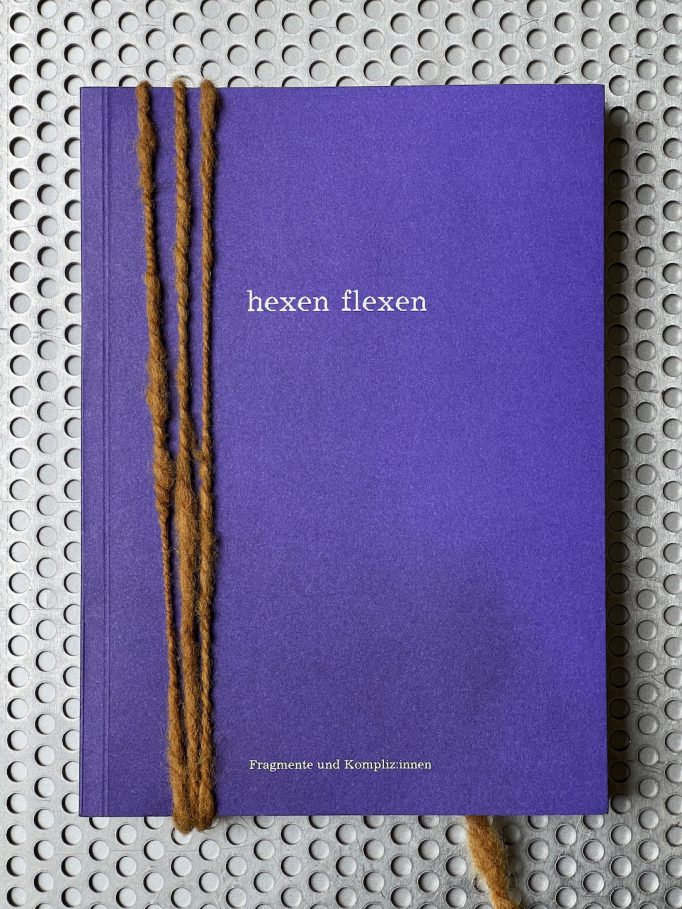




Diese Publikation vereint Quellen, Referenzen, Bildmaterial und den Rohtext des Theaterstückes hexen flexen, das im August 2021 am Theater Basel uraufgeführt wurde.
Sie stellt eine Vernetzung unserer gemeinsamen Recherche über Hexen dar und bildet eine Kontextualisierung der künstlerischen Arbeit, indem sie zwischen akademischer Herangehensweise, künstlerischer Forschung und intuitiver Vernetzung changiert. Wir bezeichnen die Verben hexen und flexen als eine Praxis, die mit Überschreibungen spielt und in der es explizit um Rückeroberung von Raum, Begriffen und Körpern geht.
Die Publikation hat kein Ende – sie stellt einen Ausschnitt aus der andauernden Recherche von Louisa Raspé und Jana Furrer dar, welche mit Johanna Schäfer und Mona Mayer geteilt und weitergewebt wurde. So ist eine Art Gewebe entstanden in weitreichender Kompliz:innenschaft; mit all jenen, die vertreten und auch nicht vertreten sind.
Order here








A comic album once discarded from a public library and later found on the street by the artist on his way to his studio is transformed into a series of abstract collages. Using simple cut and paste tactics a collection of science fiction narratives is reorganised into images drifting away from definition to be reproduced as Risograph prints on the pages of Flashback Gordon.
Order here


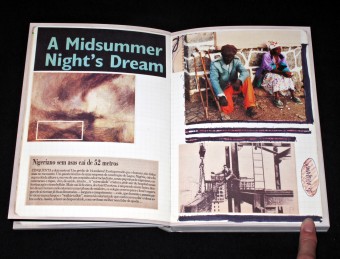


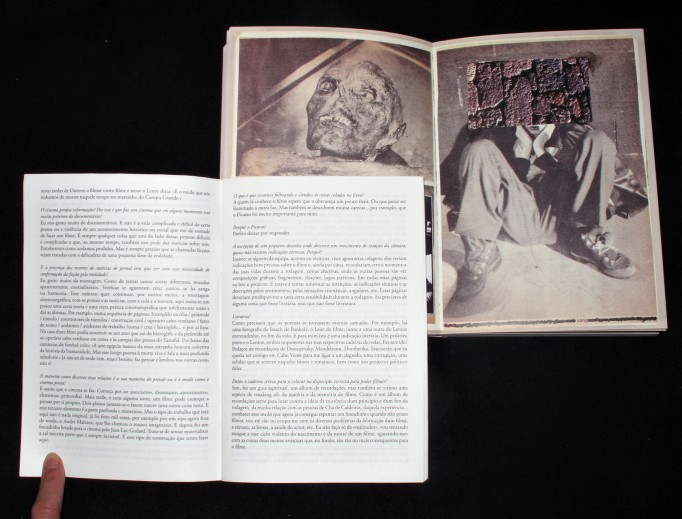
Casa de Lava – Caderno. Pedro Costa. Pierre von Kleist Editions
During the course of the production preparation for his film ‘Casa de Lava’ (1994), Portuguese filmmaker Pedro Costa compiled what he saw, what he read, his many ideas and images into a scrapbook instead of a screenplay.
Paintings, movie stills, letters, newspaper articles, scribbles, quotes from novels, postcards, lines of dialogue, snapshots, that guided him throughout the shooting of the film and that he continued – and finished – after returning to Lisboa.
This green covered notebook became an autonomous object, a visual record of Costa’s way of thinking. Reproducing the original book in full color, we’ve included an exclusive interview with Nuno Crespo and a text by Philippe Azoury (both in Portuguese, English and French).
Born in Lisbon in 1959, he left his course of studies in History to attend classes taught by the poet and filmmaker António Reis at the Lisbon Film School. His first film ‘O Sangue / Blood’ had its world premiere at the Mostra Cinematografica di Venezia in 1989.
‘Casa de Lava’, his second feature, shot on the Island of Fogo in Cabo Verde, was shown in Cannes, ‘Un Certain Regard’, in 1994.
His other feature films include ‘Ossos’, ‘In Vanda’s Room’ and ‘Where Does Your Hidden Smile Lie?’, on the work of Danièle Huillet and Jean-Marie Straub.
Recently he directed ‘Sweet Exorcist’, a segment of the omnibus feature ‘Centro Histórico’, with Manoel de Oliveira, Aki Kaurismaki and Victor Erice and he was of the invited artists of the Cuban Pavilion at the Venice Biennale 2013.
His work has been presented in galleries and museums around the world.
More about the artist: www.pedro-costa.net
Price: €28.00